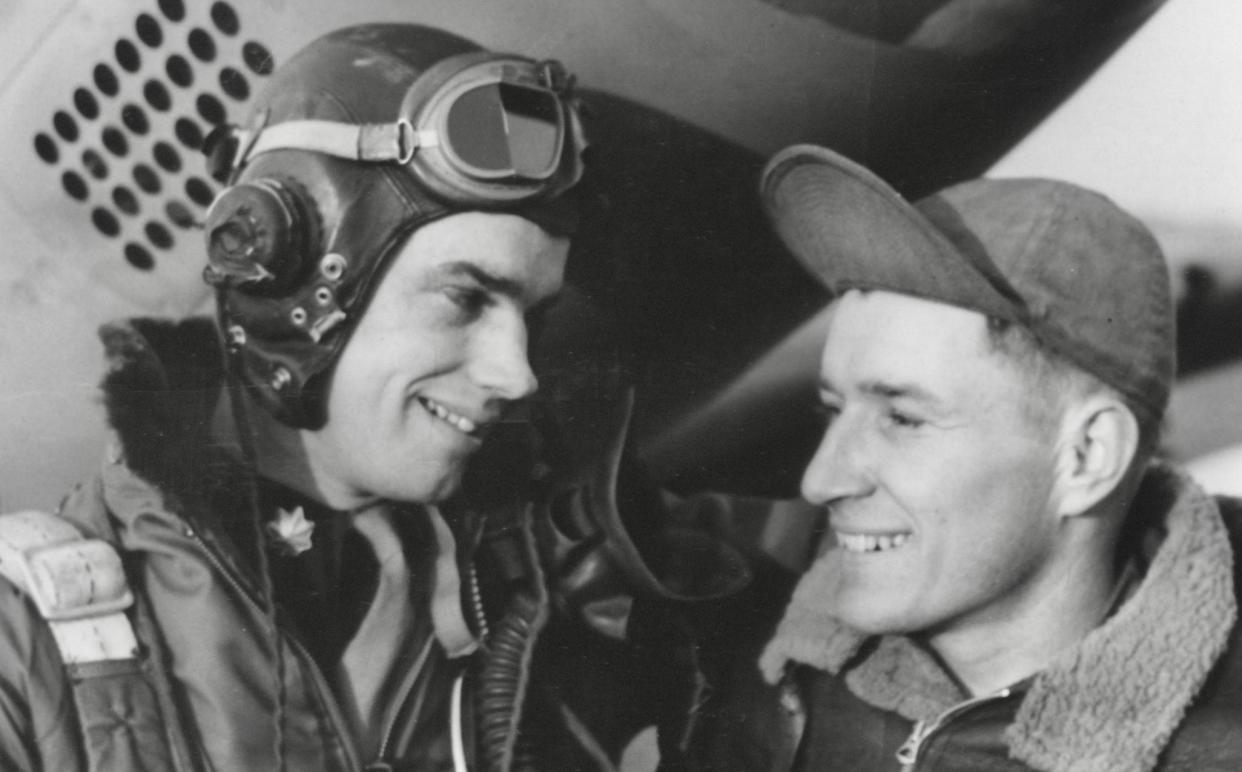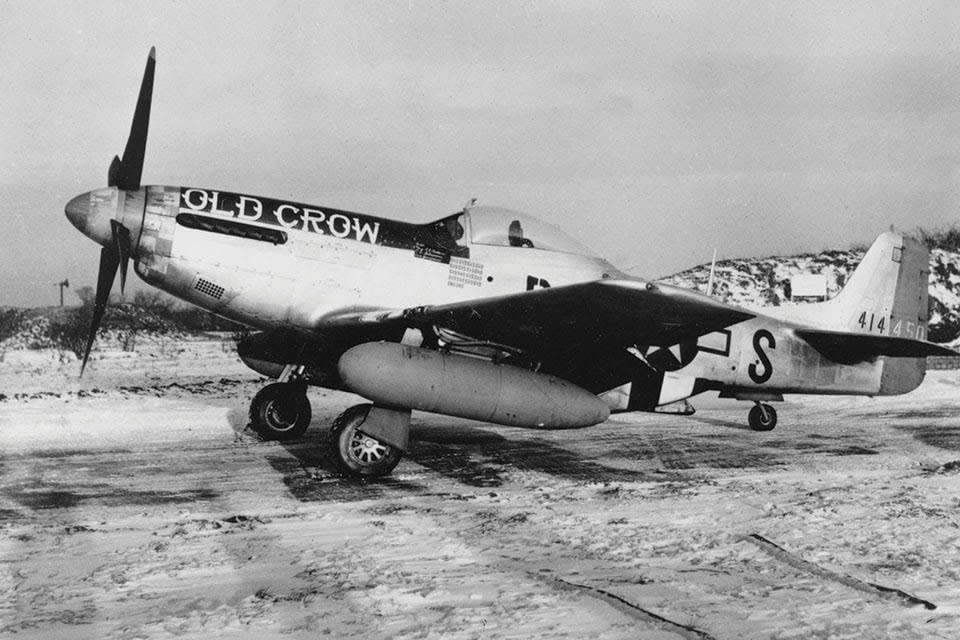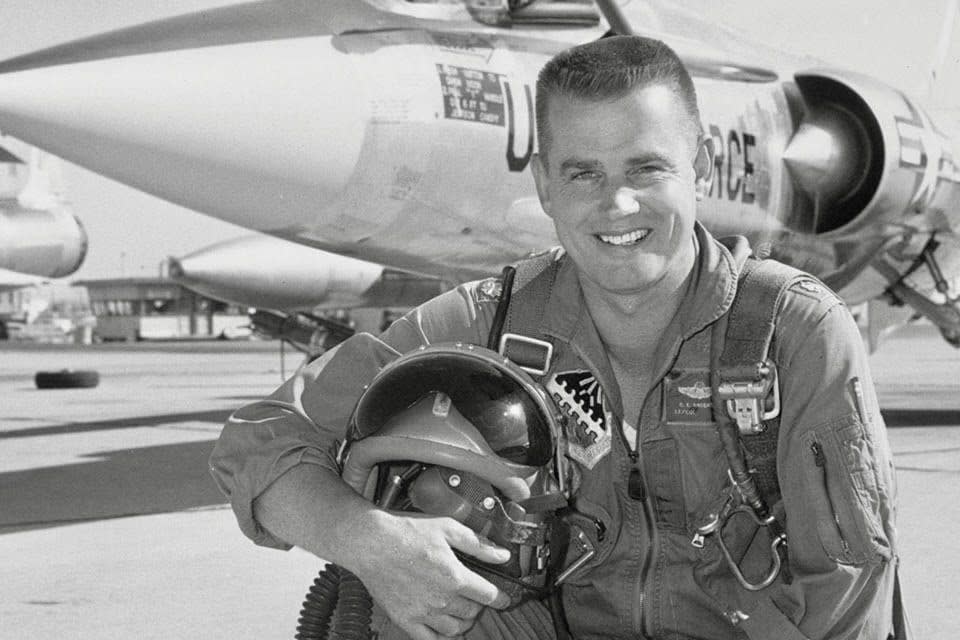‘Bud’ Anderson, American ‘triple ace’ who shot down three German aircraft on one mission – obituary

Colonel Clarence “Bud” Anderson, who has died aged 102, was an American fighter “ace” and the last surviving pilot to have achieved three confirmed victories on the same mission.
On June 29 1944, Anderson was the leader of his squadron, tasked to escort a large bomber force of the USAAF Eighth Air Force to Leipzig. Over the target, eight Focke-Wulf 190s appeared and attempted to attack the bomber formation.
Anderson dived on the leader and started firing from 100 yards, hitting the enemy fighter, which rolled on to its back as the pilot baled out. He chased a second through some thin cloud, waited to fire until he was well within range and then put in a long burst which set the FW 190 on fire. As Anderson pulled away, another FW 190 flew across his front. He opened fire and gained his third victory in the space of a few minutes, making him a “triple ace”.
Clarence Emil Anderson was born in Oakland, California, on January 13 1922 and educated at the Placer Union High School in Sacramento and at the George Washington University, Washington, DC. Whilst at college, he gained his private pilot’s licence before starting work as a civilian air mechanic at the Sacramento Air Depot.
He enlisted in the United States Army Air Corps (later United States Army Air Force) in January 1942, graduating after eight months when he started training as a fighter pilot. After an initial assignment flying the P-39 Airacobra, he joined the newly formed 363rd Fighter Squadron of the 357th Fighter Group. In November 1943, the 357th sailed for England where they were equipped with the long-range P-51 Mustang powered by a Rolls-Royce Merlin engine. The unit was based at Leiston near the Suffolk coast.

After acclimatising, Anderson flew his first mission, escorting a heavy bomber force, on February 5 1944. He recorded his feelings before taking off. “My pulse was playing a Gene Krupa [a renowned drummer] solo as I walked to my plane that morning and climbed into the cockpit. I knew I had lots to learn and what I was thinking about before prodding the Merlin into life was of not getting lost, not screwing up. I was more afraid of screwing up than of dying.”
On March 5 he shot down a Messerschmitt Bf 109 that was attacking a straggling B-17 Flying Fortress near Hanover. More success followed and on May 12 he had downed his fifth enemy aircraft, making him an “ace”. Before the end of May he destroyed three more enemy aircraft, two in a single sortie over Strasbourg. After his triple success over Hanover, he returned to the USA for a rest period. He had 12 confirmed successes and was the first pilot of the 357th to complete his 300-hour combat tour.
He returned in November for a second tour of operations. He shot down two FW 190s over Magdeburg on November 27 and claimed his final two victories on December 5 when he escorted B-17s to Berlin. With 16 confirmed successes, he was the highest scoring pilot of the 363rd Fighter Squadron.
His two Mustangs, both of which he nicknamed “Old Crow” (after a whisky of the same name), carried him safely through 116 missions without being hit by enemy fire and without him ever having to turn back for a mechanical reason, a feat he attributed to his ground crew, led by their chief, Sergeant Leon E Zimmermann. “Old Crow is as much their plane as mine,” he said. “They took as much pride in the things it accomplished as I did.”
Anderson returned to the USA in January 1945. In May 1948 he became a test pilot, serving for five years evaluating the latest jet fighters. One project involved increasing the range of a fighter by hooking it up to a four-engine bomber, to be released near a potential target.
He later commanded a fighter-bomber wing in Korea, flying the F-86 Sabre, an aircraft for which he held a particular affection. “The Sabre was more than just fast, fun to fly and pretty to look at,” he recalled. “It was fantastic in a dogfight, capable of whipping anything in the air at that time.”

He returned to test flying at Edwards Air Force base in November 1957 where he became the chief of the flight test operations division. He tested the latest generation of supersonic fighters including the F-100 Super Sabre and the F-105 Thunderchief. This was followed by an assignment to Kadena Air Base on Okinawa where he was the deputy director of operations and, later, commander of the 18th Tactical Fighter Wing.
In January 1970 he left for south-east Asia to command the 355th Tactical Fighter Wing at Takhli Air Force Base, Thailand, and flew the F-105 Thunderchief – nicknamed The Thud – in operations over Vietnam attacking enemy supply routes. His final appointment, before retiring in February 1972, was as chief of the aircraft division of Material Command at McClellan Air Force Base, California. He had completed 30 years of service and flown 130 different types of aircraft, amassing over 7,000 hours of flying time, the great majority on fighters.
He joined McDonnell Aircraft Company and served for 12 years as the manager of the company’s flight test centre at Edwards Air Force Base. He finally retired in 1984.
Anderson’s many decorations included the US Legion of Merit (twice), five Distinguished Flying Crosses, the Bronze Star and 16 Air Medals. The French appointed him to the Legion d’Honneur and awarded him the Croix de Guerre.
He was made a life member of the American Fighter Aces Association and a Fellow of the Society of Experimental Test Pilots. In 2008 he was inducted into the International Air and Space Hall of Fame and received the Congressional Gold Medal in 2015.
In retirement he led an active life, flying until he was 90, and giving talks at schools. In 1990, in conjunction with the author Joe Hamlin, he published To Fly and Fight: Memoirs of a Triple Ace.
His wife Eleanor, whom he married in 1946, died in 2015. He is survived by their son and daughter.
“Bud” Anderson, born January 13 1922, died May 17 2024

